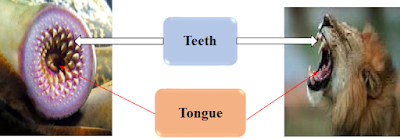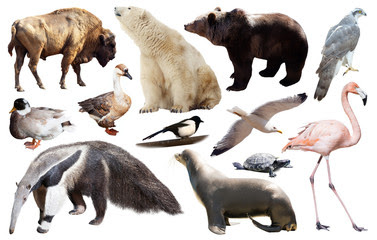Diversity In Digestive Structure of Vertebrates
Diversity in the Digestive Structure of Vertebrates.
Vertebrates
Diversity is found in every aspect of life... when we look at the Vertebrate structure; we find a lot of diversity in their organs... In the Vertebrates, the complete Digestive tract is formed, which is highly specialized in structure and function, which relates to their digestion and a wide variety of foods.
The basic Structure of Digestive Track includes the Buccal-Cavity, Pharynx, Esophagus, Stomach, Small intestine, Large Intestine, Rectum, Cloaca (anus), etc.
However, not only this, but the three important glands system is also associated with the Digestive Tract of the Vertebrate, which includes: (a) The salivary gland, (b) Liver Gallbladder, and bile duct, (c) Pancreas, and Pancreatic duct.
The Digestive System is Helpful for vertebrates Because most of the vertebrates spend most of their time getting food...
The Oral-Cavity Intestines and other major digestive structures reflect the way of their getting food.
The Oral-Cavity Intestines and other major digestive structures reflect the way of their getting food.
As this is the process of digestion, and digestive structure found in the vertebrates. But despite it, there are found a lot of differences, and diversities in the digestive structure of vertebrates, which is discussed here separately.
Tongues
The tongue is a mobile mass of muscular tissues covered with mucous membrane, and It is located with the Oral-Cavity of many Vertebrates, Which is discussed here separately.
- · Lamprey: - are those animals that have a Protrusible-Tongue with Harney teeth, which help them to Rasp their prey (hosts) flesh.
- · Fish: - fishes have a primary tongue, that bear’s teeth that help to hold the Target (prey). However, this type of tongue is not muscular.
- · Tetrapods:- Tetrapods are those animals that have evolved (acquired) Roving tongue, which helps them to gather food.
- · Ants and termite-eating mammals also have a long Sticky tongue, which helps them to gather their food.
- Carnivores:- when we have a look at the tongue of Carnivores we find that, on the tongue of the carnivores has a special structure is made called Spiny-papillae (sharp projection), which helps them to rasp flesh from a bone.
 |
SALIVARY GLANDS
In the mouth of vertebrates, three pairs of glands are present called Salivary Glands.
The Salivary Glands produce a slightly alkaline fluid called Saliva, which contains 90% of Water, lubricant Mucin(glycoprotein), and Amylase (ptyalin) Enzyme. (Amylase is responsible for digestion of carbohydrate in the vertebrates)
The Salivary Glands produce a slightly alkaline fluid called Saliva, which contains 90% of Water, lubricant Mucin(glycoprotein), and Amylase (ptyalin) Enzyme. (Amylase is responsible for digestion of carbohydrate in the vertebrates)
The Saliva lubricates the food, and Amylase hydrolyzes the Starch into Maltose.
Saliva also contains By carbonate ions (HCO3), which buffers the chemicals, thiocyanate ions (SCM) and enzyme Lysozyme which kills the microorganisms.
The salivary glands of different vertebrates are discussed here separately
Lampreys: - the salivary glands are not present in lampreys on the place of Salivary Glands. They have a pair of glands that secrete an anticoagulant that keeps their targets (prey) blood flowing as they feed.
Snakes:- in the Snakes modified salivary glands are present, which produce Poisonous substance called Venom. They inject venom through their fangs to immobilize their Prey (target).
Mammals:- in all the mammal's well developed salivary glands are present which play a very important role in their digestion.
Download Article into file PDF










very nice documents
ReplyDelete